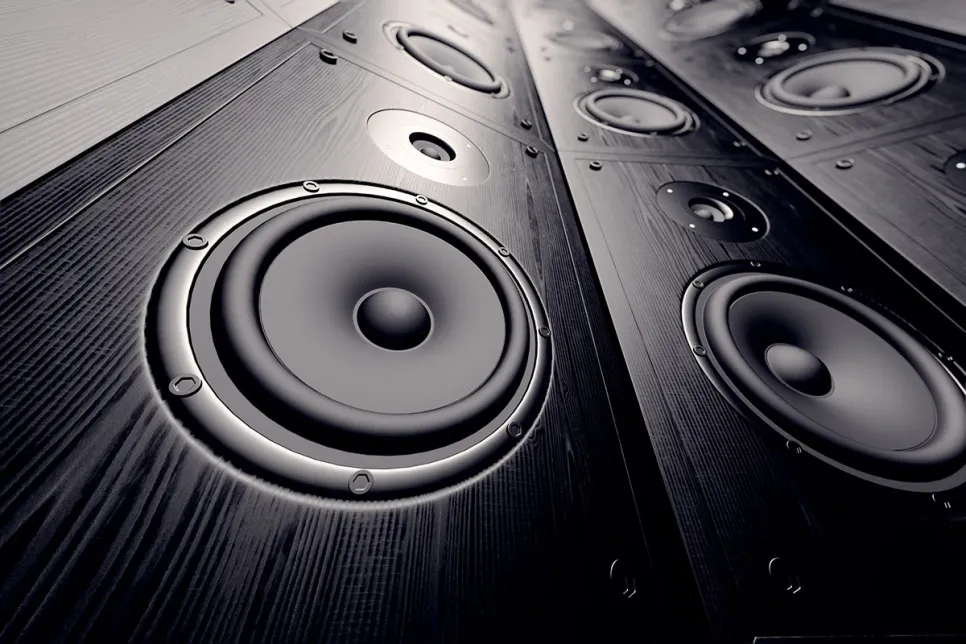European Security Spending Will Grow at Double Digits in 2024
According to the IDC study, European security spending will grow by 12.3% in 2024, marking another year of strong momentum with double-digit growth.

Demand for consumer audio hardware is on the rise, driven by renewed interest in music consumption and a range of technological improvements reshaping the market, according to Futuresource Consulting research. Comprising home audio hardware and headphones, the value of the worldwide consumer audio market was $47.5 billion in 2018, rising to $50.8 billion in 2019. Here are the key trends to watch out for.
Headphones have undergone a recent resurgence, with the worldwide headphones aftermarket worth $22.7 billion at retail in 2018, and a further 37% growth in value anticipated in 2019, once the final figures are in. The price consumers are willing to pay pushes ever higher, up 32% year-on-year in the year to October 2019, to $74.
The in-ear form factor is showing the strongest growth, with Apple’s AirPods prompting a flurry of releases from other brands and creating a major new sub-category of true wireless headphones, a category which will grow by 25% CAGR from 2019 to 2023. True wireless has also helped to grow the total in-ear segment, which now accounts for over two-thirds of all aftermarket headphones shipments.
While true wireless provides benefits around convenience and a wide feature set, it is also furthering multiple headphones ownership. In a recent Futuresource Audio Tech Lifestyles consumer study, carried out in the USA, UK, Germany, China and Japan, 69% of respondents said they regularly use two or more pairs of headphones. Whereas wireless headphones are used for listening on-the-move, making and receiving calls, playing sport and interacting with voice assistants, over-ear and higher-end headphones are used purely for audio listening. In 2019, the wireless headphones market as a whole accounted for over half of global headphones volumes for the first time.
Futuresource research also shows an opportunity for headphones to tap into technologies that will help those with hearing difficulties. The anticipated crossover with hearing aids creates an opening for a new range of smart hearable products, able to amplify and enhance speech while filtering out ambient background noise.
Looking to home audio, the market experienced strong growth in Q1-Q3 2019, achieving a year-on-year increase of 21% to reach 111 million units shipped. Wireless speakers were again the standout product, increasing 25% year-on-year, with wireless speakers with screens growing at 894% year-on-year, while soundbars grew 7% and hi-fi systems declined 9%.
Smart speakers are driving the majority of demand for wireless speakers, set to account for over half of global volumes in 2019 and on track to grow at 13% CAGR between 2019 and 2023. The US will comprise just under 50% of all smart speaker shipments in 2019, with China the second largest market and growing quickly, and the UK in third position.
Futuresource Consulting’s recent Audio Tech Lifestyles consumer survey revealed that, at 70%, listening to music is by far the most popular use for smart speakers. It is such a fundamental function that 52% of owners said they couldn’t live without the feature.
3D audio has also been receiving consumer attention over recent years, driven by Dolby Atmos and DTS:X, which are being integrated into an increasing number of CE products. Through 3D audio technologies, movie theatre experiences are being delivered into consumers’ homes and onto their mobile devices. Categories as diverse as soundbars, laptops, smartphones, TVs and tablets have all had the 3D audio treatment.
The immersive audio experience can be delivered entirely by software processing, with sound manipulated to position individual elements in different spatial locations, even on standard stereo speakers or headphones. Sales of soundbars featuring Dolby Atmos grew 147% year-on-year during the nine months to October 2019 (whereas the overall soundbar market grew just 7%).